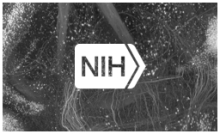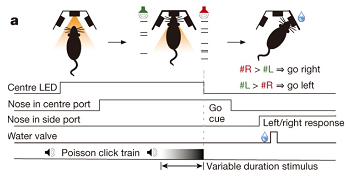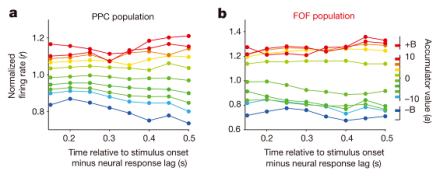
BRAIN Initiative grantee Dr. Carlos Brody co-authored a Nature paper that explores how distinct neural circuits contribute to the brain’s process of making decisions based on weighing evidence.
Dr. Carlos Brody, an HHMI investigator at Princeton University, and colleagues have published a paper in Nature that pushes the envelope of studying how the brain works to make informed decisions. This research supports the aim of Dr. Brody’s BRAIN grant, which focuses on studying the neural circuit dynamics that underlie working memory – specifically, the accumulation of evidence over time scales of seconds, a type of working memory critical for decision-making. The work also addresses the broad goal of The Brain InitiativeSM: to understand the circuits and patterns of neural activity that give rise to mental experience and behavior, by beginning to unravel the immense complexity of neural circuits and dynamic neural coding.
The authors trained laboratory rats to listen for accumulating auditory signals, and then make a decision to turn to the side (right or left) that had played the greatest number of clicks for a reward. By recording neuronal firing rates, first author Hanks et al. show that the posterior parietal cortex (PPC) builds the weight of evidence for which is the correct side to choose, whereas an area of the prefrontal cortex (frontal orienting fields, FOF) provides the ‘go’ signal for the decision. In support of this observation, the authors utilized optogenetics to show that FOF inhibition impacts the decision-making behavior only when applied around the time of the decision, not during early accumulation of auditory evidence. This is an elegant use of a simple experimental system to explore how the brain makes complex decisions.



